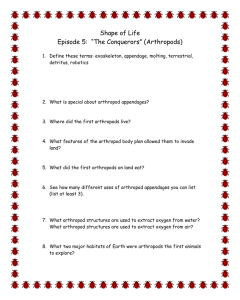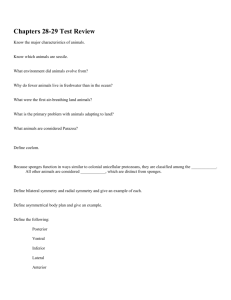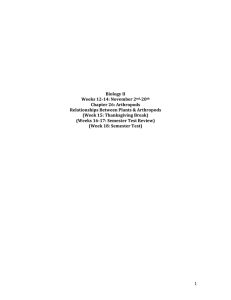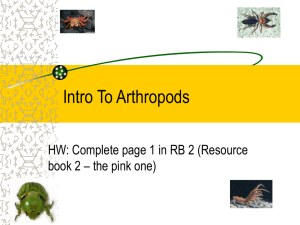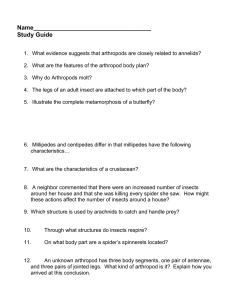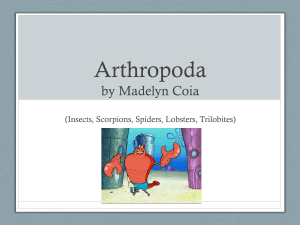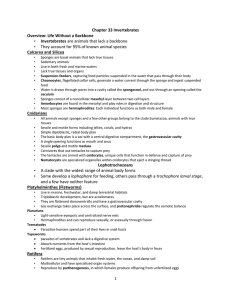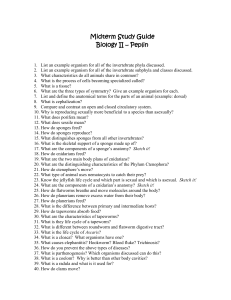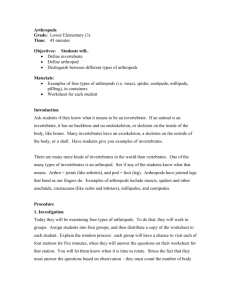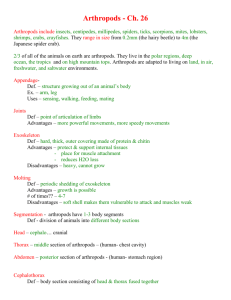TLW 6e Chapter 25
advertisement
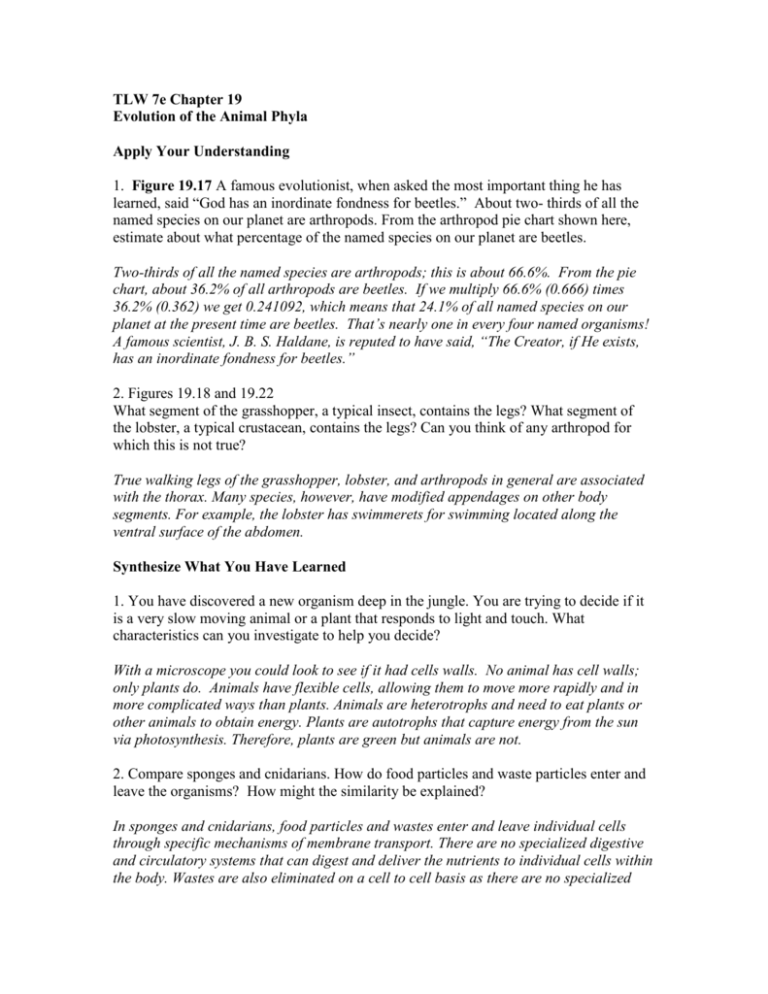
TLW 7e Chapter 19 Evolution of the Animal Phyla Apply Your Understanding 1. Figure 19.17 A famous evolutionist, when asked the most important thing he has learned, said “God has an inordinate fondness for beetles.” About two- thirds of all the named species on our planet are arthropods. From the arthropod pie chart shown here, estimate about what percentage of the named species on our planet are beetles. Two-thirds of all the named species are arthropods; this is about 66.6%. From the pie chart, about 36.2% of all arthropods are beetles. If we multiply 66.6% (0.666) times 36.2% (0.362) we get 0.241092, which means that 24.1% of all named species on our planet at the present time are beetles. That’s nearly one in every four named organisms! A famous scientist, J. B. S. Haldane, is reputed to have said, “The Creator, if He exists, has an inordinate fondness for beetles.” 2. Figures 19.18 and 19.22 What segment of the grasshopper, a typical insect, contains the legs? What segment of the lobster, a typical crustacean, contains the legs? Can you think of any arthropod for which this is not true? True walking legs of the grasshopper, lobster, and arthropods in general are associated with the thorax. Many species, however, have modified appendages on other body segments. For example, the lobster has swimmerets for swimming located along the ventral surface of the abdomen. Synthesize What You Have Learned 1. You have discovered a new organism deep in the jungle. You are trying to decide if it is a very slow moving animal or a plant that responds to light and touch. What characteristics can you investigate to help you decide? With a microscope you could look to see if it had cells walls. No animal has cell walls; only plants do. Animals have flexible cells, allowing them to move more rapidly and in more complicated ways than plants. Animals are heterotrophs and need to eat plants or other animals to obtain energy. Plants are autotrophs that capture energy from the sun via photosynthesis. Therefore, plants are green but animals are not. 2. Compare sponges and cnidarians. How do food particles and waste particles enter and leave the organisms? How might the similarity be explained? In sponges and cnidarians, food particles and wastes enter and leave individual cells through specific mechanisms of membrane transport. There are no specialized digestive and circulatory systems that can digest and deliver the nutrients to individual cells within the body. Wastes are also eliminated on a cell to cell basis as there are no specialized excretory structures. Sponges are the first multicellular animals and Cnidarians are the next in line evolutionary, thus similarities would be expected in some of their physiologies. 3. While there are more described species of insects than all other animals put together, only a few insects live in marine environments, and most of them on the ocean surface or shoreline. What factors do you think might be responsible for the insects’ lack of evolutionary success within the oceans? Answers will vary. Many of the niches that insects fill on land are not available in the oceans as other arthropods and other invertebrates have already successfully filled the niches. Respiration may also be a problem, most insects are air breathing and do not possess gills that would allow exploitation of the oceans. Salt concentrations may also be a factor with osmoregulation. 4. Do you think it is their internal skeletons that allow vertebrates to be so much larger than other animals? Explain. Yes, the vertebrate internal skeleton allows for growth of the entire body as the body of the vertebrate grows. Invertebrate animals cannot grow beyond the boundaries of their chitinous exoskeletons unless molting occurs. The arthropod is extremely vulnerable during this time.
